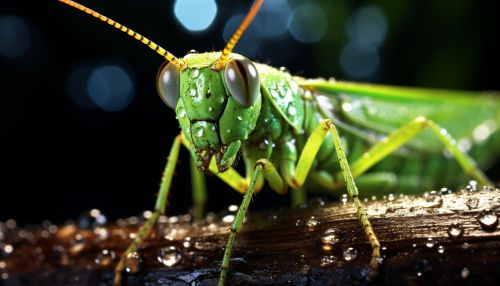Incomplete Metamorphosis
Introduction
Incomplete metamorphosis, also known as hemimetabolism, is a type of insect development that includes three distinct stages: the egg, nymph, and adult stages. This form of development is characteristic of certain insect orders, such as Orthopterans (grasshoppers and crickets), Hemipterans (true bugs), and Blattodeans (cockroaches and termites). Unlike complete metamorphosis, which includes a pupal stage, incomplete metamorphosis involves a series of nymphal stages that gradually resemble the adult form.


Stages of Incomplete Metamorphosis
Egg Stage
The first stage of incomplete metamorphosis is the egg stage. In this stage, the female insect lays eggs, often in a protected environment. The eggs are typically small, round or oval, and may be laid singly or in clusters. The duration of the egg stage varies widely among different insect species and can be influenced by environmental conditions such as temperature and humidity.
Nymph Stage
Following the egg stage is the nymph stage. The nymph is essentially a small version of the adult insect, but without fully developed wings and reproductive organs. Nymphs undergo a series of molts, shedding their exoskeleton to allow for growth. Each stage between molts is called an instar, and insects may go through several instars before reaching adulthood. The number of instars varies among species and can also be influenced by environmental conditions.
Adult Stage
The final stage in incomplete metamorphosis is the adult stage. Once the nymph has completed its final molt, it emerges as a fully formed adult, with fully developed wings and reproductive organs. Adult insects are sexually mature and capable of reproduction. The lifespan of the adult stage varies among species, ranging from a few weeks to several years in some cases.
Insect Orders Undergoing Incomplete Metamorphosis
Several insect orders undergo incomplete metamorphosis. These include the Orthoptera (grasshoppers and crickets), Hemiptera (true bugs), Blattodea (cockroaches and termites), and others. Each of these orders has unique characteristics and behaviors that are influenced by their form of development.
Orthoptera
The Orthoptera order includes insects such as grasshoppers and crickets. These insects lay their eggs in the soil or on vegetation. The nymphs resemble small adults and undergo several molts before reaching adulthood. Adult Orthopterans have fully developed wings and are often capable of flight.
Hemiptera
Hemiptera, or true bugs, are another order of insects that undergo incomplete metamorphosis. This order includes a wide variety of insects, including stink bugs, bed bugs, and aphids. Hemipteran nymphs resemble adults but are smaller and lack fully developed wings. They feed on the same types of food as adults and undergo several molts before reaching maturity.
Blattodea
The Blattodea order includes cockroaches and termites. These insects undergo incomplete metamorphosis, with nymphs resembling small adults. Cockroach and termite nymphs live in the same environment as adults and feed on the same types of food. They undergo several molts before reaching adulthood.
Ecological and Evolutionary Significance
Incomplete metamorphosis has both ecological and evolutionary significance. From an ecological perspective, it allows for resource partitioning, as nymphs and adults of the same species often occupy different ecological niches and consume different resources. This reduces competition and allows for greater species diversity.
From an evolutionary perspective, incomplete metamorphosis is thought to be an ancestral trait, with complete metamorphosis evolving later in insect evolution. This is supported by the fact that many of the most primitive insect orders, such as the Orthoptera and Hemiptera, undergo incomplete metamorphosis.
